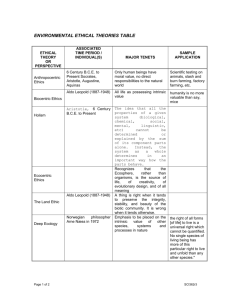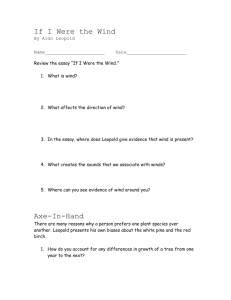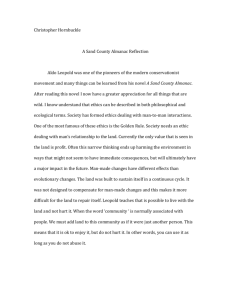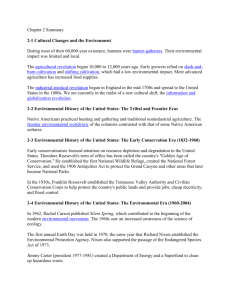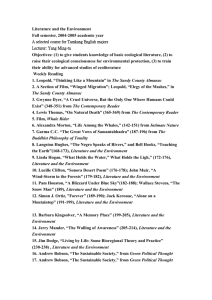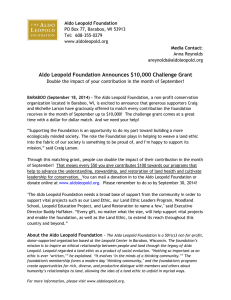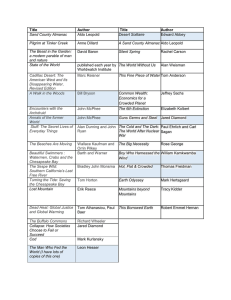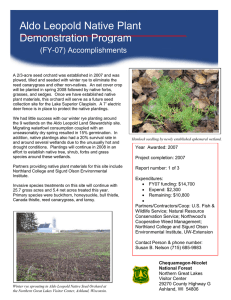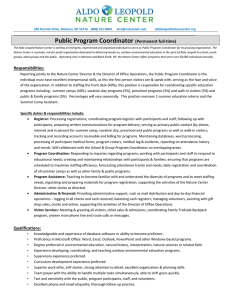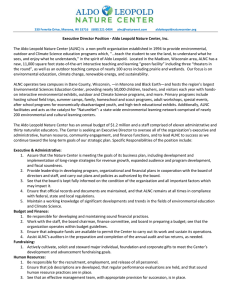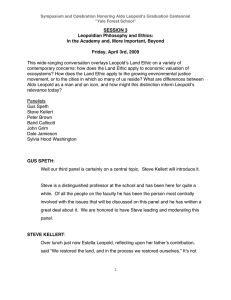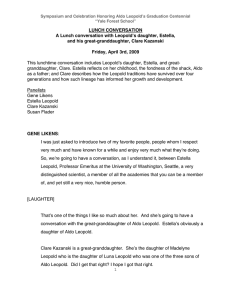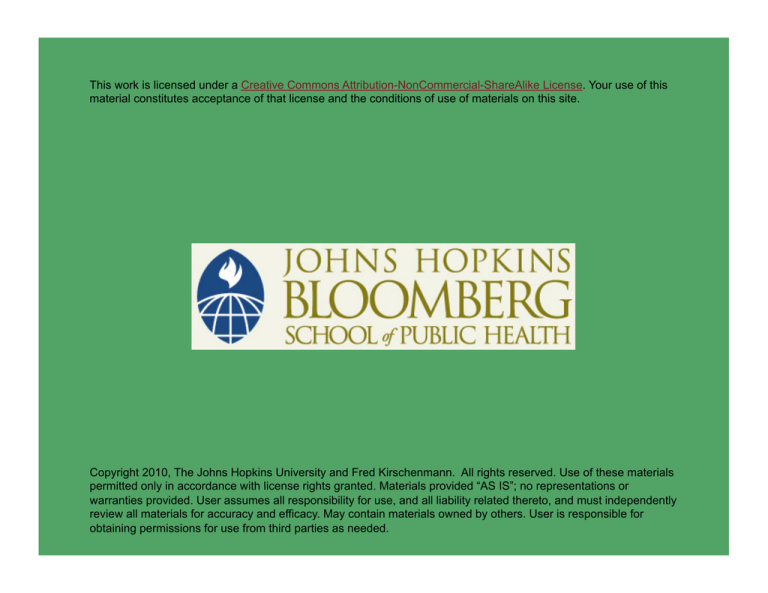
This work is licensed under a Creative Commons Attribution-NonCommercial-ShareAlike License. Your use of this
material constitutes acceptance of that license and the conditions of use of materials on this site.
Copyright 2010, The Johns Hopkins University and Fred Kirschenmann. All rights reserved. Use of these materials
permitted only in accordance with license rights granted. Materials provided “AS IS”; no representations or
warranties provided. User assumes all responsibility for use, and all liability related thereto, and must independently
review all materials for accuracy and efficacy. May contain materials owned by others. User is responsible for
obtaining permissions for use from third parties as needed.
Section B
Limits to Therapeutic Intervention
Therapeutic Intervention vs. Natural Systems Principles
W. J. Lewis et al. (1997). A total system approach to
sustainable pest management. Proceedings of the
National Academy of Sciences, 94, 12243–12248.
“ The basic principle for managing undesired variables
in agricultural systems is similar to that for other
systems, including the human body and social
systems. On the surface, it would seem that an
optimal corrective action for an undesired entity is to
apply a direct counter force against it. However,
there is a long history of experi-ences in medicine
and social science where such inter-ventionist
actions never produce sustainable desired effects.
Rather, the attempted solution becomes the
problem….”
3
Therapeutic Intervention vs. Natural Systems Principles
“… Application of external corrective actions into a
system can be effective only for short-term relief.
Long-term sustainable solutions must be achieved
through restructuring the system. . . . The foundation
for pest management in agricultural systems should
be an understanding and shoring up of the full
composite of inherent plant defenses, plant mixtures,
soil, natural enemies, and other components of the
system…”
Source: Lewis, W. J., van Lenteren, J. C., Phatak, S. C., and Tumlinson, J. H., 3rd. (1997). A total system
approach to sustainable pest management. Proceedings of the National Academy of Sciences, 94, 12243–
12248.
4
Therapeutic Intervention vs. Natural Systems Principles
“… The use of pesticides and other ‘treat-thesymptoms’ approaches are unsustainable and
should be the last rather than the first line of
defense. A pest management strategy should
always start with the underlying weaknesses in
ecosystems and/or agronomic practice(s) that have
allowed organisms to reach pest status.”
Source: Lewis, W. J., van Lenteren, J. C., Phatak, S. C., and Tumlinson, J. H., 3rd. (1997). A total system
approach to sustainable pest management. Proceedings of the National Academy of Sciences, 94, 12243–
12248.
5
Dr. Eric Lander
“ Already there are well-meaning discussions about
improving human DNA. I find this somewhat
hubristic myself. [The human genome] has been 3.5
billion years in the making. We’ve been able to read
it for the last, oh, I don’t know, year or so. And we
suddenly think we could write the story better? It’s
very amusing….”
6
Dr. Eric Lander
“… There is the prospect that by changing things we
might put off aging, prevent cancer, improve memory.
I find it a very difficult question. For my own part, I would
put an absolute ban in place on human germline gene
therapy. Not because I think for sure we should never
cross that threshold. But because I think that is such a
fateful threshold to cross that I’d like society to have to
rebut that presumption someday, to have to repeal a ban
when it thought it was time to ever try something like
that.”
— Dr. Eric Lander, leader of the team that
decoded the largest portion of the
human genome
7
Some Reflections from Aldo Leopold
“ It was inevitable and no doubt desirable that the
tremendous momentum of industrialization should have
spread to farm life. It is clear to me, however, that it has
overshot the mark . . . it is generating new insecurities,
economic and ecological, in place of those it was meant to
abolish. In its extreme form, it is humanly desolate and
economically unstable. These extremes will some day die
of their own too-much, not because they are bad for
wildlife, but because they are bad for the farmer.”
— Aldo Leopold, 1945
The Outlook for Farm Wildlife
8
Aldo Leopold Proposed Such an Ethic 50 Years Ago
“A land ethic, then, reflects the existence of an eco-logical
conscience, and this in turn reflects a conviction of individual
responsibility for the health of the land. Health is the capacity
of the land for self-renewal. Conservation is our effort to
understand and preserve this capacity.”
— Aldo Leopold, 1949
A Sand County Almanac
9
Enlarging the “Boundary” of Our Care
“ The land ethic simply enlarges the boundaries of the
community to include soils, waters, plants and animals, or
collectively: the land.”
— Aldo Leopold, 1949
A Sand County Almanac
10
In the World of Globalization
“… national health and food rules [are] treated not as the
expression of a people concerned about what sorts of
things to put in its collective stomach but rather as mere
protectionism—unless backed up by the hardest of hard
scientific evidence . . . This determinist approach toward
agriculture . . . became the flash point for a far broader
concern among citizens . . . So Globalism, put forward as
a metaphor for choice [ended up] limiting personal
choice.”
— John Ralston Saul, March 2004
Harpers
11
What’s Missing?
“ The missing concept is the ecological one of landscapesas-ecosystems, literally “home systems,” within which
organisms, including people, exist. We have been taught
that we are separate living things, but not so. The
realities of the world are ecological systems of which
organisms are components and without which no
creatures of any kind could exist.”
“ The missing attitude is sympathy with and care for the
land and water ecosystems that support life. It will come
when we make the concept of a planetary home part of
our daily thought, part of our hearts and imaginations . . .”
— Stan Rowe, Home Place: Essays in Ecology
12

